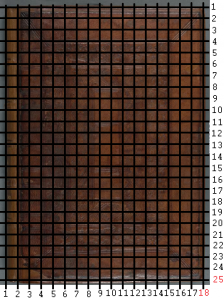Medieval manuscripts have a lot to tell us, but the information conveyed is not always just writing on parchment. In the medieval ages, not every book was manufactured to be a carbon copy of another like we have today. When monks or scribes did copy something, they did so page by page across a long period of time. The materials used, the binding, the size and many more factors can tell us not only the “what” of each manuscript, but also who it was made for and why. Each letter on the parchment was written by hand and with a purposeful choice of color and size. The content of a manuscript is only half of its story.
For example, the manuscript referenced as NLW MS 735C (735C) in The National Library of Wales contains a lot more than meets the eye. By opening 735C and simply flipping through pages, an interesting tale of astronomy is depicted, one told through the eyes of mythology. It talks of the constellations taurus, and gemini and depicts the author of the book being instructed by a muse. The book depicts the planets as faces on a medallion. This interesting blend of scientific wonder combined and enriched with ancient Greek mythology could have been the roots for modern day astrology, but who would read such a thing back in the Middle Ages, and why?

In Elaine Treharne’s Medieval Literature, she states, “Traceable textual communities in the earlier Middle Ages tended to be dominated by religious communities of monks, nuns, and canons and those who were their congregations.” This seems to hold true with this book, as half of the book was copied in a scriptorium — a room, usually in a monastery, where manuscripts were made and copied. Although the text was scientific in nature, its values don’t seem to contradict the values of the church. The manuscript does mention many different parts of greek mythology, however, it intentionally ignores greek gods or goddesses. The book was most likely a collection of tales for monks to read and share in a monastery.
Another fact that supports this theory is that 735C is fairly large. Using the reference picture that was taken of the book next to a ruler, the book seems to be about 18x25cm. This is far too big to be carrying around everywhere, therefore it is likely that the novel was not made for a single person. Books made for a single wealthy person would usually be small enough to carry around. A book this big is likely to be held in a community with many people who would or might read it. The only common communities during the middle ages to hold such books were the monasteries.

However, the book seems to be fairly well used with not much value or money put into it. The illuminations were not very well developed for this time era and the ink used was fairly common. The only images in color in the book were drawn in red and green ink which was common especially in france during the time it was copied (c.1000-1150). If a book was well funded, it would be full of illuminations and rare colors such as blue or gold. Due to the lack of value of the book as well as the fact that it was kept in a monastery, it’s likely that only monks read the book and shared the myths by word of mouth. The story could have been spread throughout Europe this way.
The manuscript itself has evidently traveled around Europe as well. Based off the book’s binding it’s likely that it has been rebound in London. As the National Library of Wales states, “It was rebound in the early seventeenth century, probably in a London workshop, perhaps by the person whose initials, ‘T. M.’, appear in the blind-tooled decoration.” Given its origin in France, the book has definitely been passed down from generation to generation until it finally ended up in Wales.
Context is important, especially when considering a manuscript from an era we can’t relate to. The content doesn’t provide us with context. However, it provides us with a story. Simply observing the materials and looking at where they came from gives us so much more. We can understand what life was like when making a book like 735C and what kind of people read them. The colors in the book tell us the value. The binding can help find the origin, and the size can hint at the readers. We can flip through the pages having better knowledge of what it was like to flip the same pages centuries ago.